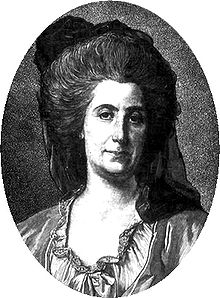Related Topics
Benjamin Franklin
A collection of Benjamin Franklin tidbits that relate Philadelphia's revolutionary prelate to his moving around the city, the colonies, and the world.

Franklin Inn Club
Hidden in a back alley near the theaters, this little club is the center of the City's literary circle. It enjoys outstanding food in surroundings which suggest Samuel Johnson's club in London.
Academia in the Philadelphia Region
Higher education is a source of pride, progress, and aggravation.
Science
Science
Revolutionary Philadelphia's Patriots
All kinds of people were patriots in 1776, and many of them were all mixed up about what was going on and how they stood. Hotheads in the London Coffee House stirred up about an inoffensive Tea Act, Scotch-Irish come here to escape the British Crown, the local artisan class and the local smuggler class, unexpectedly prospering under non-importation, and the local gentry -- offended to be denied seats in Parliament like other Englishmen. Pennsylvania wavered until Ben Franklin stepped forward with a plan.
Nobel Prizes
Some Philadelphians won Nobel Prizes for work done here, or elsewhere. Some prize winners would deny they are Philadelphians, but their work was nevertheless done here.
B. Franklin, Scientist

|
| Franklin Institute |
FROM time to time, the Franklin Institute has a display of its own and other museums' collections of the scientific instruments of Benjamin Franklin. It's well worth anybody's visit when it is available because the beauty and craftsmanship of these instruments alone make them remarkable works of art. Franklin was financially able to retire at the age of 42, and it tells you something of the 18th-century culture that Franklin took up scientific experiments in order to be like other independently wealthy gentlemen. Science, or natural philosophy, this seems to have been in a class with getting a coat of arms and having his portrait painted, all of which cheapens our view of Franklin as a scientist.

|
| Peter Collinson, F.R.S. |
In fact, Franklin was conducting an active correspondence with other scientists interested in electricity for many years, in particular, one Peter Collinson, F.R.S. in London. Collinson collected thirteen of Franklin's letters about his experiments, the earliest dated 1747, and printed them in 1751 as an 86-page book called Experiments and Observations about Electricity . By 1769, several more letters expanded the book to 150 pages, almost all of them describing reproducible experiments in great detail. The kite and key episode are described, but soberly and sparingly. Without making the point too graphically, an appendix was added describing how lightning had been used to kill some turkeys, so a somewhat increased power would probably be enough to kill a person. Franklin recognized that something was moving from here to there, that it had positive and negative charges, and that it was possible to store it up in a storage battery. He recognized the difference between substances that would conduct electricity and other substances that would act as insulators. Later on, he would discover that the torpedo fish stores and transmits electricity, suggesting that somehow animals made and used electricity as part of life. And of course, he put the discoveries to practical use as lightning rods, which he refused to patent.

|
| Madame Helvetius |
By the time he went to England and France as a negotiator, his wide acquaintanceship in the scientific world was happy to introduce him to other famous people, like kings, Voltaire, Mozart, and Madame Helvetius the wife of the Swiss philosopher, the only woman to whom he is known to have made a proposal of marriage. When someone mentioned standing before a king, he replied he had stood before five of them. King Louis XVI, for example, appointed Franklin to a four-man committee to investigate hypnotism, then being touted as "animal magnetism" by Franz Mesmer. The other three committee members were unfortunately also destined to become acquainted with the guillotine: Brother Joseph-Ignace Guillotin himself, and two future victims of the invention, Antoine Lavoisier the discoverer of oxygen, and Jean Sylvain Bailly who first calculated the course of Halley's Comet, not to mention Louis XVI himself. It is not easy to think of any other scientist who was able to mix his scientific fame with changing international history, acquiring in the process the sobriquet of the founder of the American diplomatic corps. But then, he was witty as well as smart, and his career is a warning to those who now hope to devote their whole lives to being admitted to a prestige college and then coasting on its reputation. Franklin, it should be remembered, dropped out of school after the second grade.
Originally published: Sunday, May 31, 2009; most-recently modified: Friday, September 20, 2019